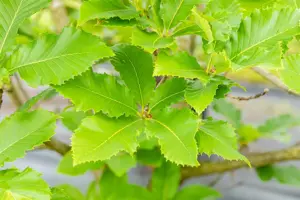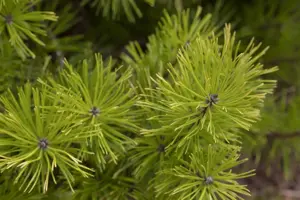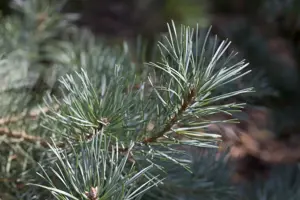Sophora japonica (Styphnolobium) - 175-200 CM C65
Sophora japonica (Styphnolobium) - 175-200 CM C65
Description
The Japanese pagoda tree (Sophora japonica) is an upright, roundish tree with decorative, green, pod-shaped fruits. It produces creamy white, butterfly-shaped flowers arranged in clusters from July to August. The Japanese pagoda tree also has pinnate, medium green leaves. In a sunny location with well-drained soil, it usually reaches a height of around 25 metres and is around 18 metres wide.
Synonym
Synonyms (botanical): Styphnolobium japonicum, Sophora sinensis.
Bulletpoints
* Fruit ornamentation
* attractive yellow autumn colouring
* Resistant to urban climates, smoke-hardy
leaves
The deciduous leaves of the Japanese pagoda trees are medium green, pinnate and alternate. They are about 20 - 25 cm tall. Japanese pagoda tree turns bright yellow in autumn. Long lasting.
Bark
Grey bark makes this plant an eye-catcher in any garden.
Spread
Asia.
Frost hardiness
The Japanese pagoda tree has good frost hardiness.
Growth
Japanese pagoda tree is an upright and roundish growing tree with a translucent, loose crown. It usually reaches a height of 15 - 25 m and is approx. 12 - 18 m wide. As a rule, it grows 30 - 40 cm per year.
Water
The plant has a medium water requirement.
Location
Preferred location in a sunny position.
Soil
Normal soil.
Planting time
Container plants can be planted all year round, except when the soil is frozen and in summer heat (over 30°C).
Care
Cut and saw wounds as well as broken branches should be treated with a wound sealant as soon as possible to prevent pathogens from entering the plant.
Flower
The creamy white, butterfly-shaped flowers of Japanese pagoda tree appear in clusters from July to August.
Fruit
The green, pod-shaped fruits of Sophora japonica are particularly decorative. These appear from September.
Use
Solitary, park
Root
Spreading branches.
- Article number18
-
EAN codeSOJAPONI-2175200C65
- Latin nameSophora japonica (Styphnolobium)
- catalogLandscape shop




